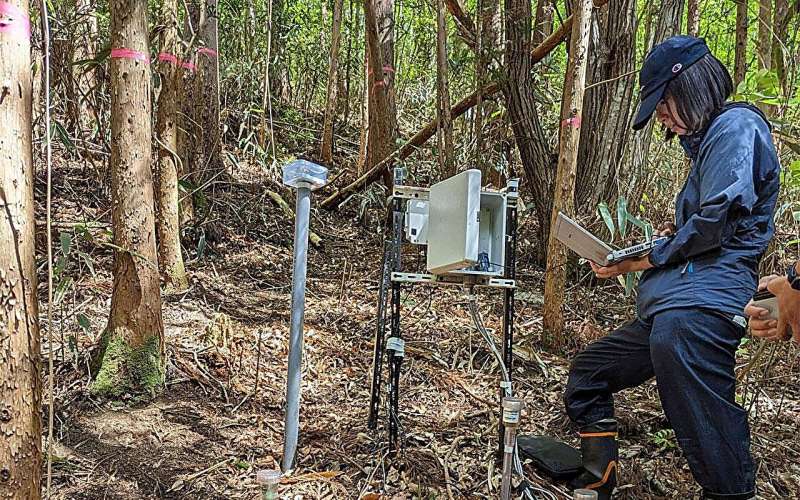This article has been reviewed according to Science X's editorial process and policies. Editors have highlighted the following attributes while ensuring the content's credibility:
fact-checked
peer-reviewed publication
trusted source
proofread
A model explaining the changes in air radiation dose rate due to rainfall

The 2011 Fukushima Dai-ichi Nuclear Power Plant accident caused the release and deposition of radionuclides, resulting in an increase in air dose rates in the forests of Fukushima Prefecture. Despite the steady long-term reduction in air dose rates because of physical attenuation and decontamination, temporary changes, such as a decrease in air dose rates after rainfall and an increase during dry weather, were observed causing apprehension among local residents.
The post-rainfall decrease in air dose rates is presumably caused by the enhanced radiation shielding effect, owing to increased soil moisture content. However, to date, no research has quantified the effects of soil moisture on air dose rates.
Accordingly, this study developed a model for estimating the rainfall-induced variations in air dose rates based on the field observations of soil moisture content and air dose rates. Notably, this method enables estimation of air dose rates even when soil moisture data are absent.
Observations regarding air dose rates were conducted in two areas of the Fukushima Prefecture (Namie Town and Kawauchi Village).The findings are published in the journal Environmental Pollution.
In Namie Town, the air dose rate decreased with increasing soil moisture. The variations in air dose rates could be explained by the amount of rainfall. Similarly, in Kawauchi Village, the soil moisture could be estimated based on the effective rainfall. Although the air dose rate exhibited considerable variations, the trend of fluctuation could be estimated.
This approach can aid in accurately quantifying the long-term decreasing trend of air dose rates by eliminating the effects of rainfall, thereby providing an accurate assessment of the environmental recovery of Fukushima.
More information: Miyu Nakanishi et al, Changes in air dose rates due to soil moisture content in the Fukushima prefecture forests, Environmental Pollution (2023). DOI: 10.1016/j.envpol.2023.122147
Journal information: Environmental Pollution
Provided by University of Tsukuba




















